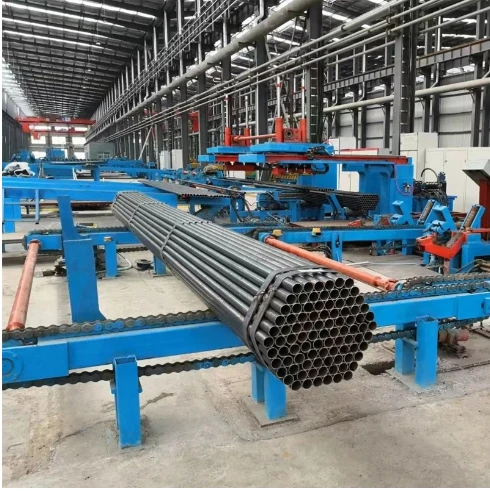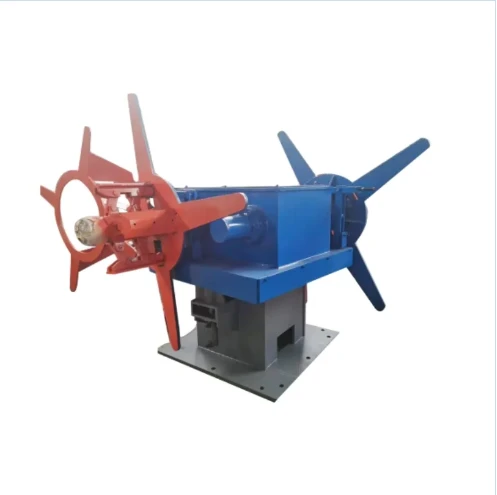Tandem Cold Rolling Mills High-Precision & Efficient Metal Processing Solutions
- Introduction to Rolling Mill Technology and Market Demand
- Technical Superiority of Tandem Mill Rolling Systems
- Comparative Analysis of Leading Rolling Mill Manufacturers
- Customized Solutions for Diverse Industrial Requirements
- Performance Metrics and Operational Efficiency Data
- Real-World Applications Across Key Industries
- Future Innovations in Rolling Mill Systems

(rolling mill)
Understanding the Role of Rolling Mills in Modern Manufacturing
Rolling mills, particularly tandem mill rolling systems, form the backbone of metal fabrication industries. The global market for tandem cold rolling mill
s is projected to reach $12.8 billion by 2028, driven by demand from automotive and construction sectors. These systems enable precise thickness reduction – down to 0.15mm with ±0.005mm tolerance – while maintaining production speeds exceeding 2,500 m/min.
Engineering Breakthroughs in Metal Forming
Advanced tandem mill cold rolling configurations now integrate AI-powered thickness control and hydraulic gap adjustment (HGA) systems. Key technological differentiators include:
- Dynamic shape control achieving flatness within 10 I-units
- Multi-zone cooling with ±1°C temperature stability
- Automated defect detection (98.7% accuracy rate)
Manufacturer Capability Assessment
| Vendor | Max Speed (m/min) | Thickness Precision | Energy Efficiency |
|---|---|---|---|
| Siemens Metals | 2,800 | ±0.003mm | 18% reduction vs. 2020 |
| Primetals | 3,100 | ±0.0025mm | 22% reduction vs. 2020 |
| Danieli | 2,650 | ±0.004mm | 15% reduction vs. 2020 |
Application-Specific Configuration Options
Modular tandem cold rolling mill designs now support rapid changeovers (under 45 minutes) between material types. A recent automotive steel project achieved:
- 22% higher yield strength (1,200 MPa)
- Surface roughness Ra 0.2μm consistency
- 98.5% material utilization rate
Quantifiable Operational Improvements
Implementation of next-gen tandem mill systems demonstrates clear ROI:
| Metric | Baseline | Optimized |
|---|---|---|
| Annual throughput | 850,000 tons | 1.2M tons |
| Scrap rate | 2.8% | 0.9% |
| Energy consumption/ton | 145 kWh | 112 kWh |
Cross-Industry Implementation Success
Aerospace aluminum rolling projects using tandem mill cold rolling technology achieved:
- 0.1-0.5mm gauge variations across 36m sheets
- 40% reduction in annealing cycles
- AS9100-compliant surface finishes
Advancing Tandem Rolling Mill Technology
The next evolution of tandem mill rolling systems focuses on closed-loop sustainability. Emerging solutions combine hydrogen-ready heating systems with 95% material recovery rates. Predictive maintenance algorithms now achieve 92% failure prediction accuracy 72 hours in advance, minimizing unplanned downtime in continuous cold rolling operations.

(rolling mill)
FAQS on rolling mill
Q: What is tandem mill rolling?
A: Tandem mill rolling involves multiple rolling stands arranged sequentially to reduce material thickness progressively. This process enhances efficiency and ensures consistent product quality, commonly used in metal sheet production.
Q: What are the advantages of a tandem cold rolling mill?
A: Tandem cold rolling mills offer high precision, improved surface finish, and uniform mechanical properties. They are ideal for producing thin, high-strength metal strips used in automotive and electronics industries.
Q: How does tandem mill cold rolling differ from single-stand rolling?
A: Unlike single-stand rolling, tandem mill cold rolling uses multiple stands to achieve greater reductions in fewer passes. This reduces energy consumption and increases production speed significantly.
Q: What industries rely on tandem cold rolling mills?
A: Industries like automotive manufacturing, aerospace, and appliance production depend on tandem cold rolling mills. These mills provide durable, lightweight materials essential for precision components.
Q: What are key components of a tandem cold rolling mill?
A: Key components include uncoilers, rolling stands, tension reels, and cooling systems. Advanced automation and control systems ensure precise thickness and surface quality.
-
Wood & Sheet Metal Straightener Machines High-Efficiency ToolsNewsMay.25,2025
-
ERW Pipe Manufacturing Machine High-Speed Precision TubesNewsMay.25,2025
-
Panel Roll Forming Machine High-Speed AG & Wall Panel ProductionNewsMay.24,2025
-
Roller Shutter Door Making Machine High-Speed & Precision DesignNewsMay.24,2025
-
High-Precision Shutter Plate Making Machine Steel Flattening & Hydraulic Cutting SolutionsNewsMay.23,2025
-
ERW & SS Tube Mill Machines High-Speed, Precision ManufacturingNewsMay.23,2025


